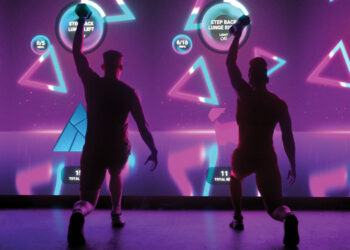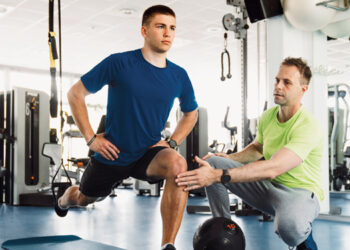Responding to demand, clubs are outfitting racks with crucial functional fitness accessories.
According to Gretchen Collins, the East Bank Club in Chicago began to take notice of the functional fitness trend back in 2010. “We started to think about programming in response to this trend and began offering more functional classes in early 2011,” said Collins, who is the East Bank Club’s director of fitness. “It has been growing rapidly since then and really began to take off in 2012.”
To accommodate for this movement, East Bank Club remodeled a 7,000-square-foot tennis court into a “Performance Center” dedicated to functional training, which was equipped with a small myriad of functional fitness accessories. “In the beginning, we started with just using body weight as our accessory, along with some bands, medicine balls and BOSU balls,” recalled Collins.

Today, the Performance Center includes a much wider variety of functional accessories. After all, these accessories are often the core of any successful functional fitness program. “The ever-evolving accessories that are available have changed the style of the classes directly,” said Collins. “They have added an element of fun and variety, and our members appreciate this. Members expect us to stay on the cutting edge of fitness equipment and accessories and we easily accommodate that with what is on the market at this time.”
What exactly is on the market? In addition to traditional functional accessories such as TRX bands, battling ropes, medicine balls and kettlebells, East Bank Club has purchased new accessories that it has found useful to its functional fitness offerings. “We recently added a variety of sleds and hurdles to our Performance Center,” said Collins. “Both tools allow members to add that element of ‘fun’ into their workouts. The sleds aid in acceleration training, while the hurdles aid in hip mobility.”
With all of the different types of functional fitness accessories available to club owners, it can be difficult to pick and choose what’s best for trainers and members.
According to Ben Quist, the owner of Form and Fitness in Grafton, Wis., there are a few accessories every club should have. “It is pretty much a base level expectation of many club consumers that rubber bands, medicine balls, Swiss balls and suspension training equipment be available for use.
“Rubber bands are still the more useful for a variety of reasons,” he continued. “They are typically great for creating standing exercise applications, which is one of the main hallmarks of functional training, and they are also inexpensive and very portable, which makes them great for large groups or off-site sessions. Suspension training is great for many of the same reasons as rubber bands — it’s great for standing position exercises, core stabilization and balance. They are also relatively inexpensive and portable.”
Before working as a club owner, Quist was a physical therapist, which led to his discovery of the benefits of functional training. “This caused me to immediately buy in and see the logical benefit of training less like a bodybuilder and more like an athlete for life,” he recalled.

When purchasing functional fitness accessories, Ronnie McNutt, the personal training area director for National Fitness Center in Tennessee, advised club owners to closely evaluate how much an accessory will be used. “Accessories should be purchased based on the demands of the population group,” he said. “Buying products without first making sure that they are desired can lead to expenses on devices that won’t be used.”
For the tried-and-true pieces (like kettlebells and rubber bands), Collins advised purchasing in bulk. “We buy in bulk for our everyday items such as resistance bands, foam rollers, stability balls, mats, etc.,” she explained. “We tend to try out new items by asking for a sample to begin with, or only ordering one or two items to make sure it is an accessory that members will use and that is durable. Once we test it out and find that it will be beneficial, we will order the total number that we feel East Bank Club needs to meet demand. We have developed a rapport with certain vendors such as Perform Better and Power Systems, so we tend to go back to those same vendors, as we can depend on them for timely service, quick turnaround on orders and great customer service.”
If you decide to test a new accessory, McNutt cautioned to evaluate it for safety, in addition to popularity. “Most members will improperly use [some] pieces, leading to injury and a risk of liability,” he said. “Functional fitness accessories should only be used with more advanced clients that have experience with those items or by trainers that have programmed them in as part of a greater program that is based around developing solid overall strength.”
For many clubs, using functional fitness accessories as part of a group class or program has proved to be extremely effective (and safer, as trainers are right there to make sure members aren’t misusing equipment). For example, East Bank Club offers classes entirely built around kettlebells and TRX bands.
“Don’t be scared to try new things, but be aware that some accessories can be somewhat trendy — try to figure out which accessories are here to stay and add those in,” continued Collins. “Ask for member feedback on certain products and gather that data to help you in your purchasing. Also, test out the product with your personal trainers and staff members to see if you can get their buy in first — this will lead to better member engagement with those products.”
By Rachel Zabonick
Stay ahead in the fitness industry with exclusive updates!
Rachel Zabonick-Chonko is the editor-in-chief of Club Solutions Magazine. She can be reached at rachel@peakemedia.com.











